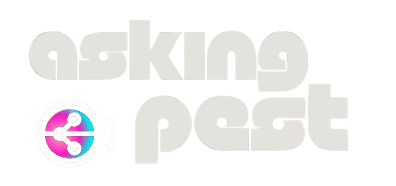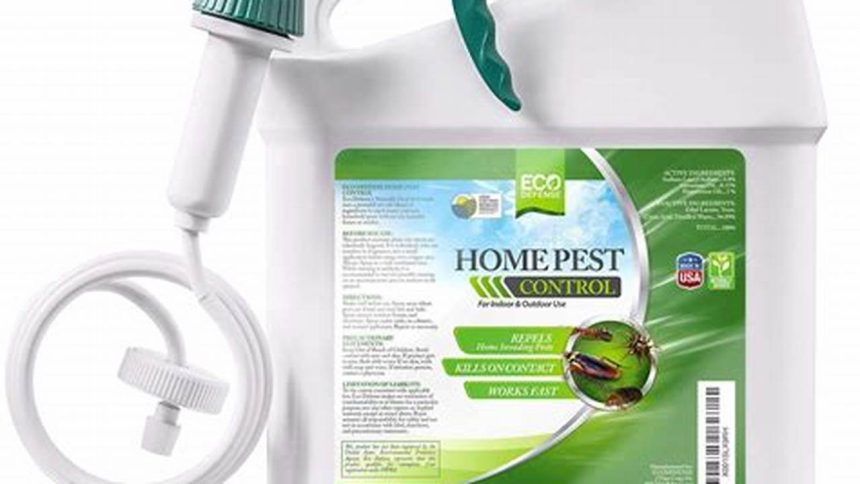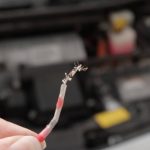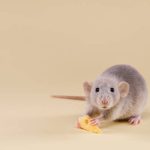Determining “when to spray for pest control” involves anticipating the optimal time to apply pesticides or execute pest management strategies to prevent infestations or mitigate existing ones. For instance, spraying before pests establish colonies or during their active season can be crucial.
Understanding the correct timing for pest control is paramount, as it enhances treatment efficacy, reduces environmental impact, and optimizes resource allocation. The development of integrated pest management (IPM) in the 1950s marked a significant advancement, emphasizing preventive measures, monitoring, and targeted treatments based on pest biology and environmental conditions.
This article delves into the specific factors to consider when determining the ideal time to spray for pest control, exploring seasonal variations, pest life cycles, and environmental cues that guide effective and sustainable pest management practices.
When to spray for pest control
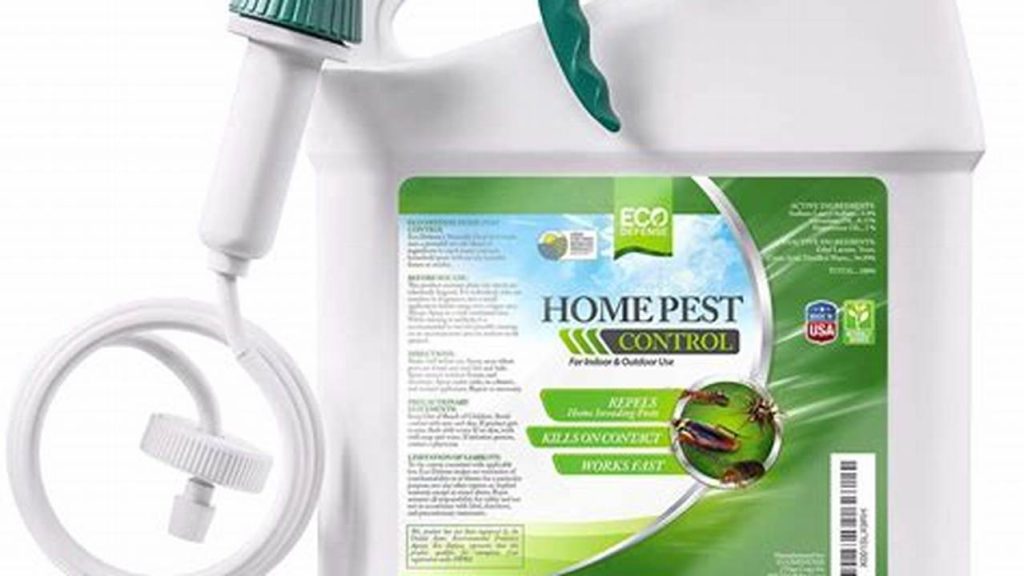
Determining the optimal time for pest control is crucial for effective and sustainable pest management. Various factors influence the ideal timing, including:
- Pest life cycle
- Environmental conditions
- Seasonal variations
- Pest behavior
- Treatment options
- Monitoring data
- Prevention strategies
- Regulatory guidelines
- Safety concerns
- Cost-effectiveness
Understanding these aspects helps tailor pest control measures to specific pest problems, minimize environmental impact, and optimize resource allocation. By considering pest biology, environmental cues, and treatment options, we can determine the most effective time to spray for pest control, reducing the risk of pest infestations and protecting human health and property.
Pest life cycle
Understanding the pest life cycle is crucial for determining the optimal timing of pest control measures. Different stages of a pest’s life cycle present varying vulnerabilities and require specific treatment approaches. By aligning pest control efforts with these stages, we can maximize treatment efficacy and minimize environmental impact.
- Egg stage: Targeting pests in the egg stage can prevent population growth and reduce the risk of infestation. For example, spraying before egg hatching can eliminate emerging pests before they become adults and cause damage.
- Larval/nymphal stage: During the larval or nymphal stage, pests are often more susceptible to insecticides and less mobile, making them easier to control. Spraying during this stage can effectively reduce pest populations and prevent further development.
- Pupal stage: The pupal stage is a transitional phase where pests are less active and vulnerable. However, spraying during this stage can target pests before they emerge as adults and reproduce.
- Adult stage: Targeting adult pests is essential to break the reproductive cycle and prevent population growth. Spraying during the adult stage can eliminate active pests and reduce the risk of re-infestation.
By considering the specific life cycle of the target pest, pest control professionals can determine the most appropriate time to spray, ensuring effective and sustainable pest management.
Environmental conditions
Environmental conditions play a pivotal role in determining when to spray for pest control. Factors such as temperature, humidity, rainfall, and wind can significantly influence pest activity, development, and behavior. Understanding these conditions is crucial for effective pest management. Additionally, it is important to know where bed bugs come from and whether common household products like Lysol can be effective against them.
For instance, high temperatures and low humidity can accelerate pest development, making it necessary to spray earlier in the season. Conversely, cool, humid conditions may slow down pest activity, allowing for a more extended spraying window. Rainfall can wash away pesticides, making it necessary to reapply treatments after heavy rains. Wind can also affect the efficacy of spraying, as strong winds can disperse pesticides before they reach their target.
By considering environmental conditions, pest control professionals can determine the optimal time to spray for specific pests. This knowledge helps ensure that treatments are applied when pests are most vulnerable and that pesticides are used effectively. It also minimizes the risk of environmental contamination and promotes sustainable pest management practices. For example, understanding where bed bugs come from—such as infested furniture or luggage—can help prevent their spread.
Understanding the connection between environmental conditions and when to spray for pest control is essential for effective and environmentally responsible pest management. By considering factors such as temperature, humidity, rainfall, and wind, pest control professionals can tailor their treatments to specific pest problems and optimize the timing of applications. This approach reduces the need for excessive pesticide use, minimizes environmental impact, and promotes the long-term sustainability of pest management programs. In the case of bed bugs, while some may wonder, Does Lysol kill bed bugs?, it is generally recommended to use more specialized treatments for effective eradication.
Seasonal variations
Seasonal variations significantly influence the timing of pest control measures. Different seasons bring forth unique environmental conditions, pest behaviors, and population dynamics, all of which impact the effectiveness of pest control treatments.
- Pest Activity: Pests exhibit seasonal patterns in their activity levels. Some pests are more active during warmer months, while others thrive in cooler temperatures. Understanding these activity patterns is crucial for targeting pests when they are most vulnerable.
- Pest Development: Seasonal temperature and humidity variations affect pest development rates. Warmer temperatures can accelerate pest life cycles, resulting in faster population growth and increased pest pressure. Conversely, colder temperatures can slow down development, providing a window for targeted pest control interventions.
- Pest Behavior: Seasonal changes can influence pest behavior, such as feeding habits, mating patterns, and dispersal. Understanding these behavioral shifts is essential for selecting the appropriate pest control methods and application timing.
- Environmental Impact: Seasonal variations in temperature, humidity, and rainfall can affect the degradation and persistence of pesticides. These factors must be considered when determining the optimal application timing to minimize environmental impact and maximize pest control efficacy.
By considering seasonal variations, pest control professionals can tailor their treatments to specific pests and environmental conditions, optimizing the timing of applications for maximum effectiveness and sustainability.
Pest behavior
Understanding pest behavior is crucial in determining the optimal timing for pest control. Pests exhibit distinct behavioral patterns throughout their life cycle, influenced by environmental cues, food availability, and mating habits. These behaviors directly impact the effectiveness of pest control treatments.
For instance, cockroaches are nocturnal and prefer dark, moist environments. Spraying pesticides during the day when they are less active may not be as effective as applying treatments at night when they emerge to feed and mate. Similarly, understanding the swarming behavior of termites allows pest control professionals to target treatments during specific periods of the year when colonies are most vulnerable.
By studying pest behavior, researchers have developed targeted pest control strategies that align with the specific vulnerabilities of different pest species. This knowledge has led to the development of pheromone traps, which exploit pest mating behaviors, and the use of growth regulators, which interfere with pest development and reproduction.
In summary, understanding pest behavior is a critical component of determining when to spray for pest control. By considering the behavioral patterns of target pests, pest control professionals can tailor treatments to maximize efficacy, minimize environmental impact, and promote sustainable pest management practices.
Treatment options
Treatment options play a pivotal role in determining when to spray for pest control. The choice of treatment method influences the timing of application, as different treatments have varying modes of action, target pests, and environmental considerations.
For instance, baits and traps are often used for long-term pest management, as they provide a continuous source of control. However, the timing of bait placement or trap installation is crucial to ensure maximum effectiveness. Baits should be placed in areas where pests are likely to encounter them, and traps should be monitored and emptied regularly. Insecticides, on the other hand, may require multiple applications timed according to the pest’s life cycle and the residual activity of the product.
Understanding the treatment options available and their specific characteristics is essential for determining the optimal time to spray for pest control. Pest control professionals consider factors such as pest species, infestation severity, environmental conditions, and safety concerns when selecting the appropriate treatment method and application timing. By aligning treatment options with pest biology and behavior, pest control professionals can achieve effective and sustainable pest management outcomes.
In summary, treatment options are a critical component of determining when to spray for pest control. The choice of treatment method influences the timing of application, and understanding the characteristics and effectiveness of different treatment options is crucial for optimizing pest control strategies. By considering pest biology, environmental factors, and safety concerns, pest control professionals can select the most appropriate treatment options and determine the optimal timing for application, ensuring effective and sustainable pest management.
Monitoring data
Monitoring data is a critical aspect of determining when to spray for pest control. It provides valuable information about pest populations, their behavior, and the effectiveness of previous treatments, allowing pest control professionals to make informed decisions and optimize their strategies.
- Pest Populations:
Monitoring data helps track pest populations over time. By analyzing data on pest sightings, traps, and inspections, pest control professionals can identify areas with high pest activity and prioritize treatments accordingly. - Pest Behavior:
Monitoring data can reveal patterns in pest behavior, such as seasonal fluctuations, feeding habits, and response to treatments. This information helps pest control professionals anticipate pest activity and target treatments at the most effective time. - Treatment Effectiveness:
Monitoring data allows pest control professionals to evaluate the effectiveness of previous treatments and make necessary adjustments. By tracking pest populations before and after treatments, they can determine if additional treatments are needed or if alternative methods should be employed. - Environmental Conditions:
Monitoring data can also include environmental conditions, such as temperature, humidity, and rainfall, which influence pest activity and treatment efficacy. By considering these factors, pest control professionals can adjust their treatment timing and selection to maximize effectiveness.
Overall, monitoring data plays a crucial role in determining when to spray for pest control. By providing valuable insights into pest populations, their behavior, treatment effectiveness, and environmental conditions, it empowers pest control professionals to make informed decisions and implement targeted treatments, ultimately leading to more effective and sustainable pest management outcomes.
Prevention strategies
Prevention strategies play a vital role in determining the optimal timing for pest control. By implementing proactive measures that minimize pest infestation risks, we can reduce the need for frequent spraying and create a more sustainable pest management plan.
- Habitat modification:
Eliminating potential breeding grounds and food sources for pests, such as sealing cracks and crevices, removing standing water, and storing food properly, can significantly reduce pest infestations. - Exclusion:
Using physical barriers, such as screens, weatherstripping, and door sweeps, can prevent pests from entering structures and establishing populations. - Sanitation:
Maintaining a clean environment by regularly removing garbage, cleaning up spills, and addressing moisture issues can make an area less attractive to pests. - Integrated pest management (IPM):
IPM combines multiple pest control methods, including prevention strategies, monitoring, and targeted treatments, to manage pest populations in a holistic and sustainable manner.
In conclusion, by implementing effective prevention strategies as part of a comprehensive pest control plan, we can reduce the need for frequent spraying, minimize the use of pesticides, and create a more sustainable approach to pest management. Prevention strategies empower us to take proactive steps in creating environments that are less conducive to pest infestations, ultimately leading to more effective and long-term pest control outcomes.
Regulatory guidelines
Regulatory guidelines play a crucial role in determining when to spray for pest control by establishing legal frameworks and industry standards that govern the use of pesticides and pest control practices. These guidelines aim to protect human health, the environment, and natural resources from potential risks associated with pest control activities.
- Licensing and Certification:
Many countries require pest control operators to be licensed and certified to ensure they have the necessary knowledge, skills, and training to handle pesticides safely and effectively. - Pesticide Registration:
Pesticides must be registered with regulatory authorities before they can be sold and used. The registration process involves a rigorous scientific evaluation to assess the safety and efficacy of the pesticide, including its potential risks to human health and the environment. - Labeling and Use Instructions:
Pesticide labels provide detailed instructions on how to use the product safely and effectively, including the appropriate application rates, target pests, and safety precautions. Regulatory guidelines ensure that these labels are accurate and comprehensive. - Environmental Protection:
Regulatory guidelines often include measures to protect the environment from the potential risks of pest control activities. These measures may include restrictions on the use of certain pesticides in sensitive areas, such as near water bodies or endangered species habitats.
By adhering to regulatory guidelines, pest control professionals can ensure that their practices comply with legal requirements and industry best practices. These guidelines contribute to the safe and responsible use of pesticides, minimizing risks to human health, the environment, and natural resources, while also optimizing the effectiveness of pest control efforts.
Safety concerns
When determining the optimal time to spray for pest control, safety concerns play a critical role. These concerns encompass a wide range of factors, including the potential risks to human health, the environment, and non-target organisms.
- Toxicity: Pesticides can vary in their toxicity levels, and exposure to certain pesticides can pose health risks to humans and animals. Proper timing and application techniques are crucial to minimize the risk of exposure and potential harm.
- Environmental Impact: Pesticides can have adverse effects on the environment, including contamination of water sources, harm to beneficial insects, and disruption of ecosystems. Careful consideration of the environmental impact is essential when determining the appropriate time to spray.
- Non-Target Effects: Pest control treatments should aim to minimize harm to non-target organisms, such as beneficial insects, pets, and wildlife. Selecting the right treatment methods and timing applications strategically can help reduce the risk of unintended consequences.
- Resistance Development: Repeated use of pesticides can lead to the development of resistance in pest populations, reducing the effectiveness of treatments over time. Monitoring pest populations and rotating different types of pesticides can help mitigate resistance and maintain effective pest control.
Addressing safety concerns when determining when to spray for pest control is paramount. By considering the potential risks to human health, the environment, and non-target organisms, pest control professionals and individuals can make informed decisions that prioritize safety and minimize negative impacts.
Cost-effectiveness
Cost-effectiveness plays a critical role in determining the optimal time to spray for pest control. It involves optimizing pest management strategies to achieve effective pest control while minimizing expenses. Understanding the relationship between cost-effectiveness and timing of pest control treatments is essential for businesses, homeowners, and pest control professionals alike.
A key aspect of cost-effectiveness in pest control is choosing the right treatment method and timing it strategically. Preventive measures, such as sealing entry points, eliminating food sources, and implementing sanitation protocols, can significantly reduce the need for costly chemical treatments. Regular monitoring and early intervention can also prevent minor infestations from escalating into full-blown problems, reducing overall treatment costs.
For example, in commercial settings, implementing integrated pest management (IPM) programs has proven to be cost-effective. IPM combines multiple pest control techniques, including monitoring, exclusion, and targeted treatments, to prevent pest infestations and minimize the need for reactive, expensive treatments. By focusing on long-term prevention and sustainability, IPM programs can significantly reduce pest-related costs over time.
Understanding the cost-effectiveness of different pest control options allows decision-makers to allocate resources wisely and prioritize treatments based on their cost-benefit ratio. This approach ensures efficient use of funds, minimizes unnecessary expenses, and optimizes pest management outcomes. By considering cost-effectiveness as a critical component of determining when to spray for pest control, businesses and individuals can make informed choices that maximize value and minimize financial burdens.
Frequently Asked Questions on When to Spray for Pest Control
This FAQ section addresses common questions and provides concise answers to clarify the optimal timing for pest control treatments.
Question 1: What is the best time of year to spray for pests?
Answer: The ideal time for pest control treatments varies depending on pest species, climate, and environmental conditions. Generally, early spring or late summer are suitable times when pests are more active and before populations surge.
Question 2: How often should I spray for pests?
Answer: The frequency of pest control treatments depends on the severity of the infestation, type of pest, and effectiveness of the treatment. Regular monitoring and inspection can help determine the appropriate treatment schedule.
Question 3: What are the signs that I need to spray for pests?
Answer: Signs of a pest infestation may include visible pests, droppings, damage to property or belongings, or unusual odors. Prompt treatment is recommended to prevent further damage or health risks.
Question 4: Is it better to spray for pests during the day or night?
Answer: The best time to spray for pests depends on their behavior. Some pests are more active at night, while others are more susceptible to treatments during the day. Consider the pest species and their habits when determining the optimal application time.
Question 5: How long does it take for pest control treatments to work?
Answer: The effectiveness and duration of pest control treatments vary based on the type of treatment, severity of the infestation, and environmental factors. Some treatments may provide immediate results, while others require multiple applications or time to take full effect.
Question 6: Can I spray for pests myself, or should I hire a professional?
Answer: While DIY pest control options are available, it’s generally recommended to hire a licensed pest control professional. They have the expertise, equipment, and knowledge to safely and effectively address pest infestations, ensuring long-term results.
These FAQs provide essential insights into the optimal timing for pest control treatments. Understanding these factors helps prevent pest infestations, minimize the risk of damage, and optimize the effectiveness of pest control measures. For further guidance and a comprehensive approach to pest management, consult with a qualified pest control professional.
Continuing to the next section: Effective Pest Control Strategies >>
Effective Pest Control Tips
To enhance your pest control efforts, consider implementing these practical tips:
Tip 1: Seal Entry Points: Inspect your property for potential entry points such as cracks, gaps, and holes. Seal these openings with caulk, weatherstripping, or expanding foam to prevent pests from entering.
Tip 2: Eliminate Food Sources: Store food in airtight containers or the refrigerator. Regularly clean up spills and crumbs. Remove pet food and water bowls overnight or when pets are not present.
Tip 3: Reduce Moisture: Pests thrive in moist environments. Fix leaky faucets, drains, and pipes. Use a dehumidifier to control humidity levels.
Tip 4: Keep Your Yard Clean: Trim overgrown grass and vegetation around your home. Remove piles of leaves, debris, and other potential pest hiding spots.
Tip 5: Inspect Regularly: Regularly inspect your property for signs of pest activity, such as droppings, damage, or unusual odors. Early detection allows for prompt treatment.
Tip 6: Natural Pest Repellents: Use natural pest repellents such as peppermint oil, vinegar, or citrus peels around entry points, windows, and doors.
Tip 7: Vacuum and Clean: Regularly vacuum and clean your home to remove food debris, dust, and potential pest nesting sites.
Tip 8: Consider Professional Help: If DIY methods are ineffective or the infestation is severe, contact a licensed pest control professional for assistance.
By following these tips, you can create a less hospitable environment for pests, reducing the risk of infestations and the need for frequent treatments.
Proceeding to the final section: The Importance of Integrated Pest Management >>
Conclusion
Understanding the optimal time to spray for pest control is crucial for effective and sustainable pest management. This article has explored the various factors that influence the timing of pest control treatments, including pest life cycle, environmental conditions, seasonal variations, pest behavior, treatment options, monitoring data, prevention strategies, regulatory guidelines, safety concerns, and cost-effectiveness. By considering these factors, we can determine the most appropriate time to spray for pests, minimizing environmental impact, optimizing treatment efficacy, and reducing the risk of pest infestations.
A comprehensive approach to pest control involves integrating various strategies, such as prevention, monitoring, and targeted treatments. This approach ensures long-term pest management success while minimizing the reliance on chemical treatments. Furthermore, adhering to regulatory guidelines and safety protocols is paramount to protect human health, the environment, and non-target organisms. By embracing responsible pest control practices and staying informed about the latest advancements, we can create a more sustainable and pest-free environment.
